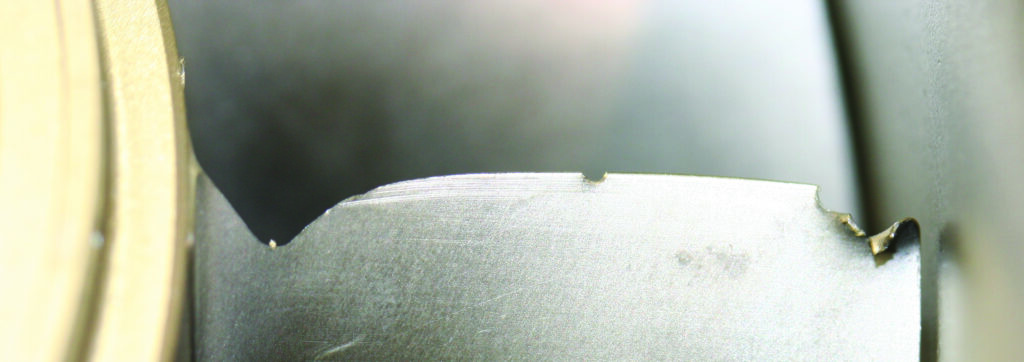As I began thinking about this topic, it dawned on me that several of us may not know what the acronym means. FOD can stand for two different but associated things. The first acronym meaning is Foreign Object Debris. It makes sense when people say FOD damage that they are using this meaning. The second meaning is Foreign Object Damage. When we discuss engine components with damage due to ingestion, this is the meaning we reference. For instance, the blade requires repair due to FOD.
The first thing I always bring up with regards to FOD is that the event may be insurable. If you have an incident that cannot be repaired on wing, be sure and contact your insurance company to determine if your event is insurable on your policy.

The engine maintenance manual doesn’t specifically call out FOD until you get further into the manual, rather it talks of material ingestion with additional specific call outs for bird strikes or “soft material” ingestion inspections. If material remains are found on the 1st stage compressor blades, it is an indication that soft material has been ingested. We had this happen not too long ago. A customer said his performance had changed after a bird strike. The inspection calls out possible contamination of the gas path. We found “material” left over from a bird strike had contaminated the bleed valve and was leading to improper function. A little cleaning and washing got him back in the air quickly. If you have this type of occurrence and the engine is to remain in service after a soft material ingestion, then a performance recovery wash must be done per the maintenance manual.
If other material goes into the compressor, such as stones, ice, etc., you must inspect the compressor and determine the next course of action. Part of this inspection requirement is a performance run to make sure that the compressor operation has not been compromised. If performance is acceptable but there is damage on the compressor, you must decide if the FOD is acceptable. Inspection historically has been accomplished with the use of a mirror and flashlight. Due to heightened concerns about erosion of the PT6A-67’s a borescope is now necessary to make determinations of damage. A borescope is a very handy tool to help you make the proper decisions.

If the damage found on the compressor from either FOD or erosion are within the acceptable limits, you might make the decision to continue operation without repair. Per the engine maintenance manual there is an “acceptable without repair” path that you can take. Yes, that is right, acceptable WITHOUT repair. BUT, you knew a but was coming, if the engine with acceptable damage remains in service without repair, the FOD must be inspected again in 100 hours. Subsequent inspections are up to you but must not exceed 400 hours. All of this is based upon acceptable performance.
There are blend repairs in the manual to prevent unnecessary engine removal. You must keep in mind there are some specific limits and directions in the engine maintenance manual that will help limit the performance loss that the compressor could experience. A performance run must again be performed post repair. It is possible that the post repair performance is so negatively impacted that the engine will have to be removed to address the performance loss.
There are a handful of items that you cannot address on wing. Unacceptable damage includes tears, cracks, tip curl and sharp edges. Repairing FOD on wing is not the simplest of tasks as there is limited access to the affected parts. You do need to document any repairs that you accomplish and keep the inlet and airbox as clean as possible. Don’t forget your air filter maintenance, this is the first line of protection that you have against FOD. If you have any questions or concerns, feel free to contact us. We are here to help you.
Robert Craymer has worked on PT6A engine and PT6A powered aircraft for the past three decades, including the last 25+ years at Covington Aircraft. As a licensed A&P mechanic, Robert has held every job in an engine overhaul shop as well as being an instructor of PT6A Maintenance and Familiarization courses for both pilots and mechanics.


